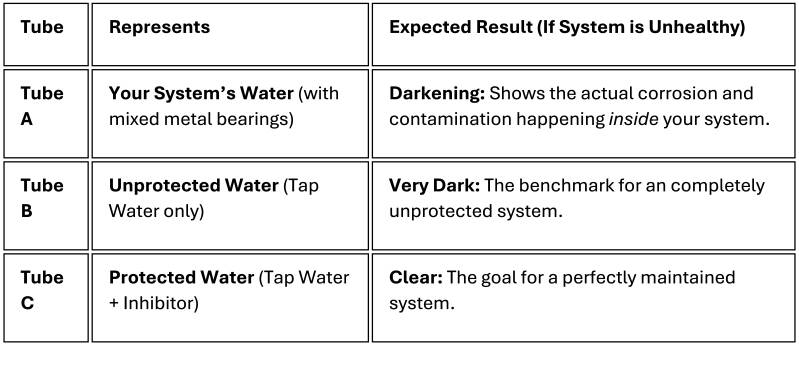Dr Radiators In-Box Demonstration

This isn’t magic—it’s the reality of a heating system, brought into the light.
Seeing the Problem and understanding the Solution provides clarity.
A Home Heating Test Kit includes test tubes containing Reagent-1, 2 and 3 that, when combined with your radiator water, react to mirror the day-to-day life of a heating system:
The Turbidity test simulates the heating cycles that accelerate internal damage. Follow the simple instructions to complete the test.
After 20 minutes, compare the colours of the tubes:
-
The closer Tube A (Your radiator water) is to Tube B, (Simple tap water), the more unbalanced your system is. This indicates a buildup of corrosion and a lack of protection.
-
The closer Tube A is to Tube C, (With added protection), the healthier your system.
-
Any level of colour change in Tube A is a call to action. Use this irrefutable evidence to confidently restore a heating system's health before costly damage occurs.
-
Complete the Dr Radiator online Test Results Entry form and receive your dashboard showing results and recommendations.


This visual proof solidifies the next step and defines the way forward:
Homeowners, Dr Radiator & Our Partners’ working as one.
-
Homeowner: You provide the initial data and the visual confirmation, becoming an informed decision-maker.
-
Dr Radiator’s Role: We provide a precise diagnosis (Dashboard Report) and a clear visual evidence (Inbox Demonstration), ensuring no guesswork is involved.
-
Local Professionals Role: They apply their hands-on expertise to perform the necessary treatment, using the Dr Radiator Report as their guide to restore your system to the clean, clear state represented by Tube C.
